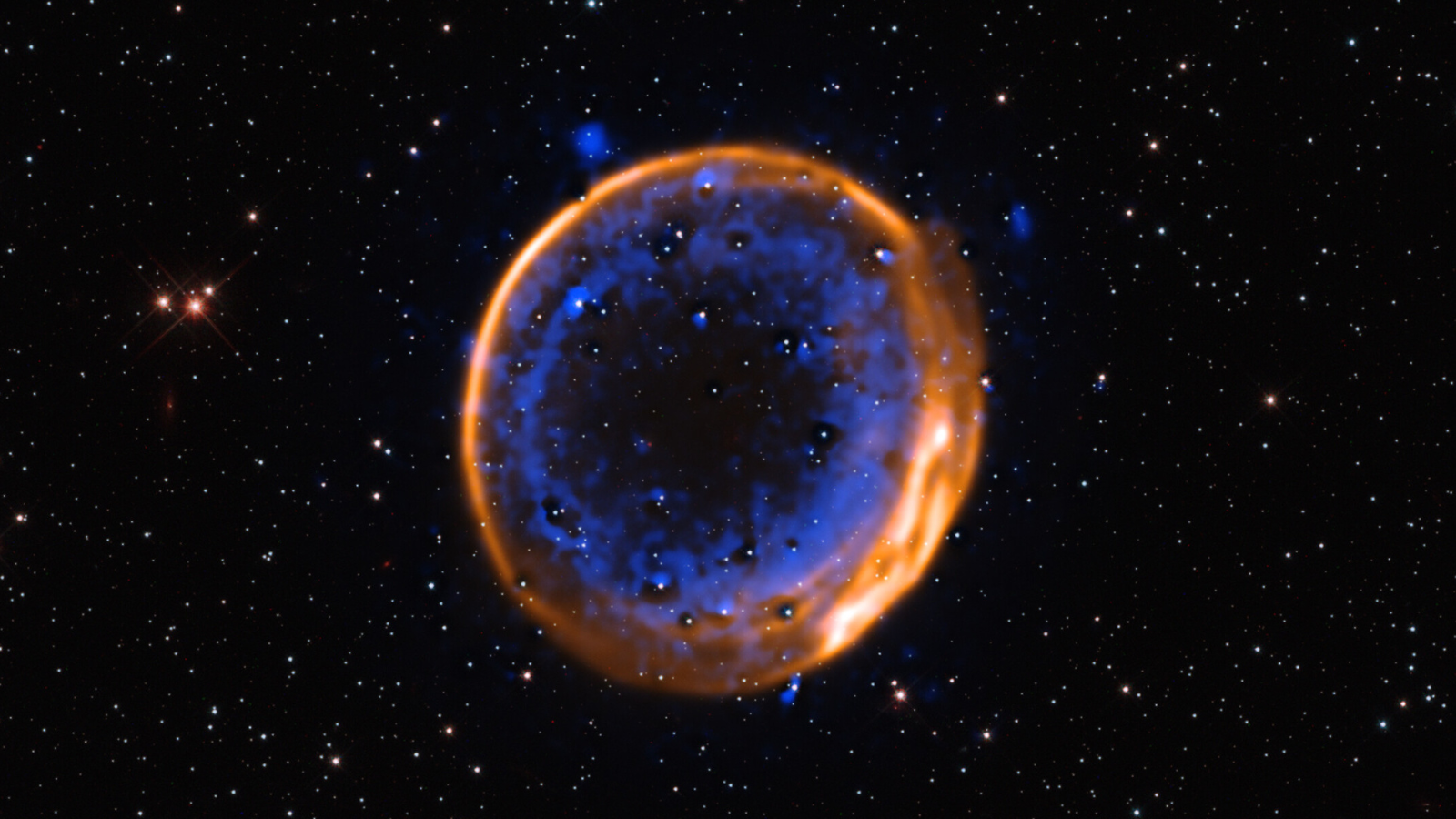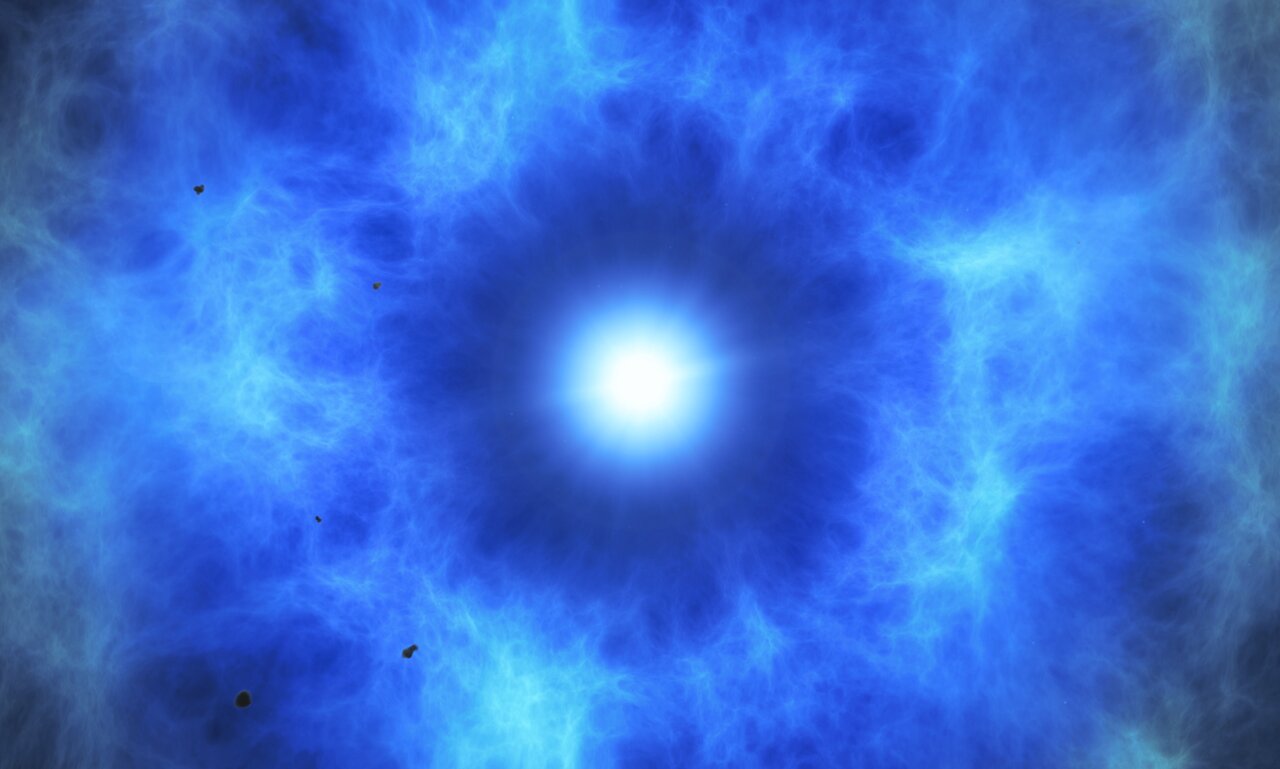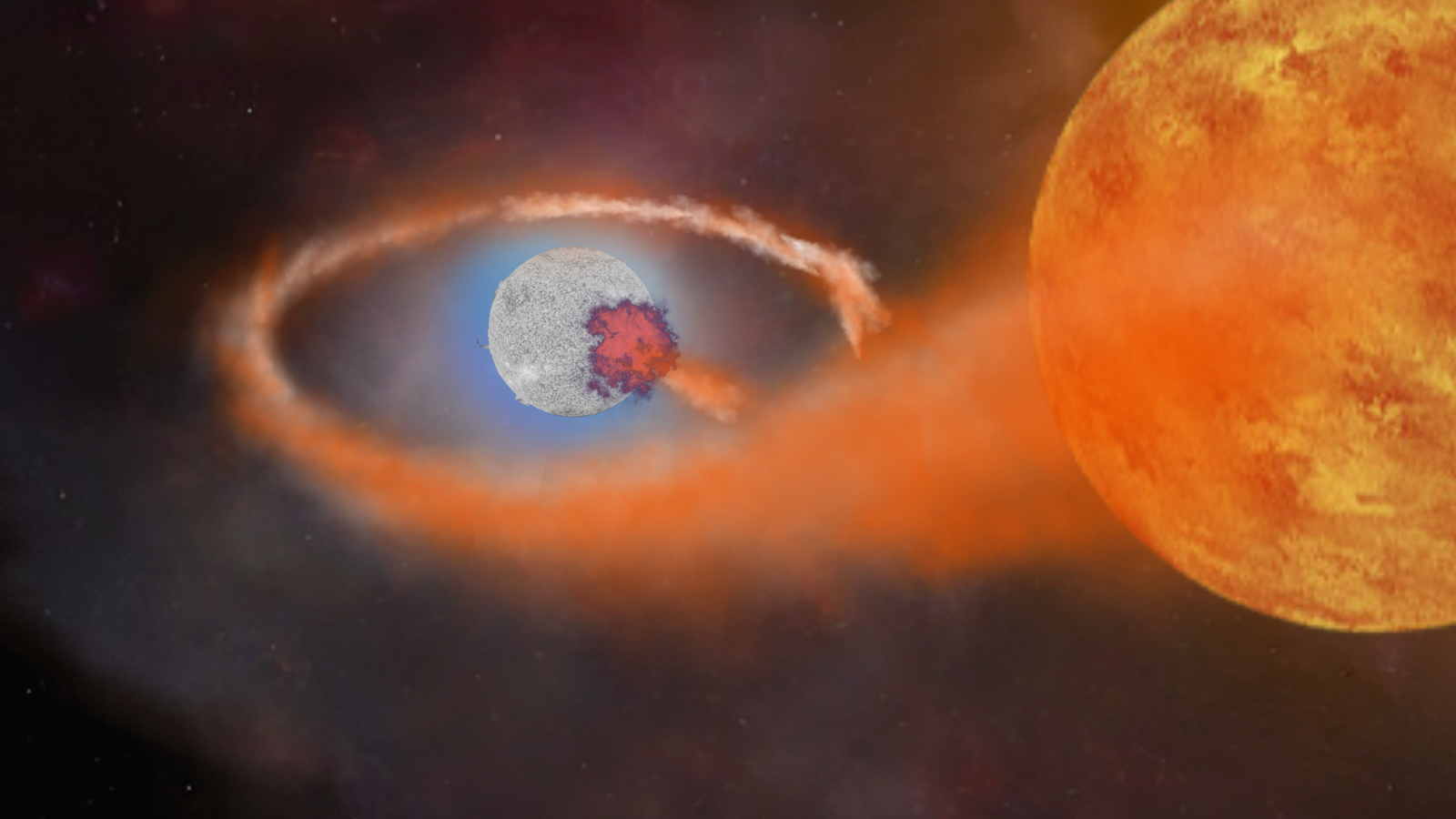Astronomers capture incredible 1st image of a dead star that exploded twice. How did it happen?
"This tangible evidence of a double detonation not only contributes towards solving a long-standing mystery, but also offers a visual spectacle."

You may only live once, but some stars die twice. Astronomers have now discovered the first visual evidence of such a stellar event, a dead star that underwent a so-called "double-detonation." This could indicate that some stars could go supernova without reaching the so-called Chandrasekhar limit, the minimum mass that a star needs to go supernova.
Using the Very Large Telescope (VLT) and its Multi Unit Spectroscopic Explorer (MUSE) instrument, the team zoomed in on the centuries-old remains of supernova SNR 0509-67.5 located 60,000 light-years away in the constellation Dorado. This investigation revealed structures within this explosive wreckage that indicate its progenitor star exploded not once but twice.
Said star was a white dwarf, the type of stellar remnant that forms when a star with a mass similar to that of the sun runs out of fuel for nuclear fusion.

The types of supernova explosions that white dwarfs undergo, Type Ia supernovas, are important to astronomers because they can be used to measure cosmic distances because their light output is so uniform. Thus, astronomers often refer to them as "standard candles."
The first visual evidence of a double detonation white dwarf reveals hidden depths to these important stellar events, scientists say.
"The explosions of white dwarfs play a crucial role in astronomy," team leader and University of New South Wales researcher Priyam Das said in a statement. "Yet, despite their importance, the long-standing puzzle of the exact mechanism triggering their explosion remains unsolved."
You only die twice
Scientists agree that the genesis of Type Ia supernovas is binary systems of two stars in which one becomes a white dwarf.
If this dead star orbits close enough to its living stellar companion, or if that companion swells up, then the white dwarf becomes a stellar vampire, greedily stripping material from its companion or "donor" star.
Breaking space news, the latest updates on rocket launches, skywatching events and more!
This continues until the piling up stolen material has added so much mass to the white dwarf that the stellar remnant crosses the so-called Chandrasekhar limit, which is about 1.4 times the mass of the sun.
Hence, this cosmic vampire white dwarf explodes in a Type Ia supernova. It is believed that in most cases, the eruption completely destroys the white dwarf. But for some time, astronomers have suspected there may be more to the story.
Maybe white dwarfs can experience a second explosion. This research confirms that at least some white dwarfs experience double-detonations.
The question is: why?
Theory behind double-detonations suggests that in these cases, as white dwarfs are stripping material from a donor star, they wrap themselves in a blanket of stolen helium. This envelope becomes unstable and eventually ignites, triggering the first detonation.
The initial explosion generates a shockwave that ripples inwards, eventually striking the core of the white dwarf, triggering a second detonation, the actual supernova.
The significance of this to our understanding of Type Ia white dwarf supernovas is that it can occur well before a dead star swells beyond the Chandrasekhar limit.

Recently, scientists determined that this double-detonation process would imprint a distinctive "fingerprint" with supernova wreckage. This should be present long after the supernova ripped its progenitor star apart.
That fingerprint is now visually confirmed as being present in the wreckage of SNR 0509-67.5, supernova wreckage in the Large Magellanic Cloud first detected in 2004 and believed to be around 400 years old as we see it.
Beyond being an important discovery for our scientific understanding of these events and solving a lingering mystery about the evolution of white dwarfs, the observation of SNR 0509-67.5 has provided astronomy lovers with some stunning eye-candy.
"This tangible evidence of a double-detonation not only contributes towards solving a long-standing mystery, but also offers a visual spectacle," Das concluded.
The team's research was published on Wednesday (July 2) in the journal Nature Astronomy
Join our Space Forums to keep talking space on the latest missions, night sky and more! And if you have a news tip, correction or comment, let us know at: community@space.com.

Robert Lea is a science journalist in the U.K. whose articles have been published in Physics World, New Scientist, Astronomy Magazine, All About Space, Newsweek and ZME Science. He also writes about science communication for Elsevier and the European Journal of Physics. Rob holds a bachelor of science degree in physics and astronomy from the U.K.’s Open University. Follow him on Twitter @sciencef1rst.
You must confirm your public display name before commenting
Please logout and then login again, you will then be prompted to enter your display name.

